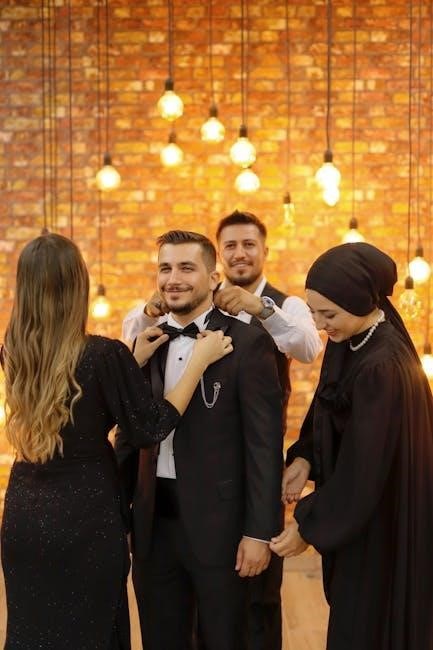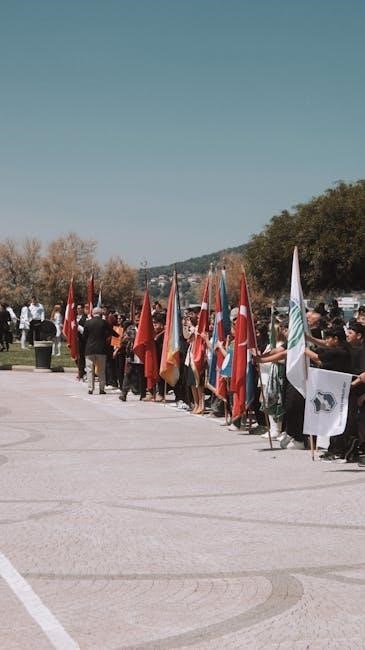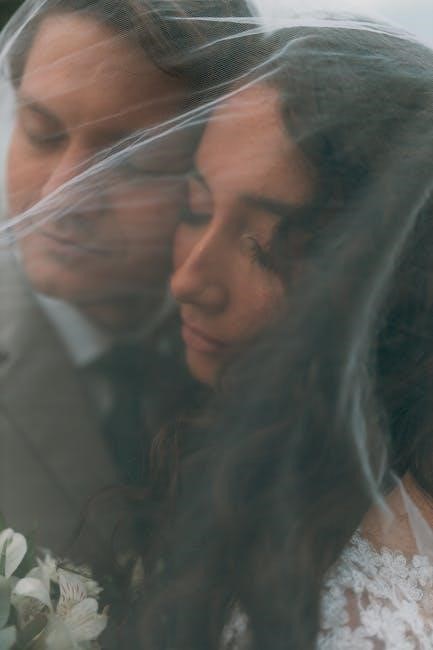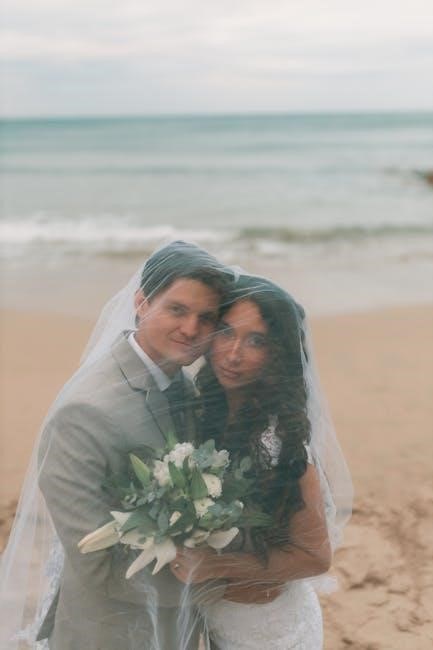ceremony silko pdf
Leslie Marmon Silko, born in 1948 to a family of Laguna Pueblo, Mexican, and European ancestry, is a celebrated Native American writer. Her work often explores themes of identity, cultural displacement, and healing. Silko’s debut novel, Ceremony (1977), is a seminal work that blends traditional stories with modern struggles, reflecting her deep connection to her heritage and the resilience of indigenous cultures.
Background and Heritage
Leslie Marmon Silko was born in 1948 in Albuquerque, New Mexico, to a family with a rich and diverse ancestry. Her heritage includes Laguna Pueblo, Mexican, and European roots, which deeply influenced her writing and worldview. Growing up on the Laguna Pueblo Reservation, Silko was exposed to the oral traditions and storytelling of her Native American community, which would later become a cornerstone of her literary style.
Silko’s mixed ancestry often appears as a theme in her work, particularly in her exploration of identity and cultural dislocation. Her father, Lee Marmon, was of Laguna and European descent, while her mother, Mary Virginia Leslie, had Mexican and European ancestry. This blend of cultures shaped Silko’s perspective on the complexities of belonging and the intersections of indigenous and non-indigenous traditions.

Her upbringing on the reservation provided her with a strong connection to Laguna culture, including its myths, rituals, and storytelling practices. These elements are central to her novel Ceremony, which reflects her deep respect for the spiritual and cultural traditions of her people. Silko’s heritage also influenced her academic pursuits, as she studied English literature at the University of New Mexico, where she began to develop her writing skills.
Her experiences as a mixed-blood individual and her connection to the Laguna Pueblo have made her a prominent voice in Native American literature. Silko’s work often explores the tensions and harmonies between her diverse backgrounds, creating a unique literary perspective that honors her heritage while addressing universal themes of identity and resilience.
Writing Style and Themes
Leslie Marmon Silko’s writing style is deeply rooted in the oral traditions of her Laguna Pueblo heritage, blending storytelling with poetic prose. Her work often incorporates elements of myth, ritual, and cultural history, creating a rich tapestry of narrative and symbolism. In Ceremony, Silko masterfully weaves together fragmented memories, myths, and contemporary realities, reflecting the non-linear nature of indigenous storytelling.

Central to Silko’s writing are themes of identity, cultural dislocation, and healing. Her characters, often caught between multiple worlds, grapple with the tensions of mixed ancestry and the erosion of traditional ways of life. Tayo, the protagonist of Ceremony, embodies this struggle, seeking to reconcile his Native American heritage with the trauma of war and the alienation of modern society.
Silko’s exploration of healing is both personal and communal, drawing on Pueblo rituals and ceremonies to restore balance and wholeness. Her writing often critiques the destructive forces of colonialism and the Eurocentric worldview, offering instead a vision of resilience and renewal rooted in indigenous traditions. Through her unique style and thematic depth, Silko has become a leading voice in Native American literature, challenging readers to confront the complexities of identity and culture.

Her use of vivid imagery and lyrical language underscores the spiritual and emotional dimensions of her stories, creating a powerful emotional resonance. Silko’s work continues to inspire critical acclaim and scholarly study, cementing her legacy as a groundbreaking author in contemporary literature.

Overview of Ceremony
Ceremony, Leslie Marmon Silko’s debut novel, published in 1977, tells the story of Tayo, a Laguna Pueblo veteran returning from World War II. The novel intertwines traditional stories with Tayo’s struggles, exploring themes of identity, healing, and cultural resilience. It is a landmark work in Native American literature, reflecting Silko’s unique voice and vision.

Plot Summary
Ceremony follows Tayo, a young Laguna Pueblo veteran, as he returns to his reservation after World War II. Haunted by the trauma of the war and the death of his cousin, Rocky, Tayo struggles with what appears to be post-traumatic stress disorder. His physical and emotional scars alienate him from his community, which fails to understand his pain. Desperate for healing, Tayo turns to traditional Laguna ceremonies led by a medicine man named Betonie and later by a wise woman named Ts’eh. These rituals, rooted in ancient myths and stories, guide Tayo on a journey of self-discovery and recovery. Through these ceremonies, Tayo confronts his past, including the horrors of war and the loss of his cultural identity. The novel interweaves traditional stories, such as the myth of the Witch’s destruction and the tale of the Corn Women, with Tayo’s modern struggles, creating a narrative that bridges the past and present. Ultimately, Tayo’s healing is achieved through his reconnection to his Laguna heritage and the power of storytelling. The novel concludes with Tayo finding peace, symbolized by his ability to participate in a ceremony and his acceptance of his dual identity. By blending myth and reality, Silko crafts a powerful story of resilience and the enduring strength of cultural traditions.
Publication Details
Ceremony, the groundbreaking novel by Leslie Marmon Silko, was first published in 1977 by Penguin Books; The book has since been reissued in multiple editions, including a 1986 edition by Penguin and later versions in 2006 and 2016. The novel is widely regarded as a landmark work in Native American literature, blending traditional storytelling with contemporary themes. The 2006 edition includes a detailed introduction by Larry McMurtry, providing context and insights into the novel’s significance. The book has also been made available in digital formats, such as PDF and ePub, allowing readers to access it easily. The publication has been recognized for its enduring power and relevance, with scholars and readers alike praising its masterful storytelling and cultural depth. Silko’s dedication to preserving indigenous traditions and exploring identity is evident throughout the text, making Ceremony a vital contribution to American literature. The novel remains a cherished and studied work, offering a profound exploration of healing, culture, and resilience.

Themes in Ceremony
Central themes in Ceremony include healing, identity, and cultural dislocation. Silko explores Tayo’s journey to restore balance within himself and his community, blending traditional Laguna rituals with modern struggles. The novel highlights the clash between indigenous traditions and Western influences, emphasizing the importance of cultural preservation and personal resilience.
Healing and Identity
In Ceremony, healing and identity are deeply intertwined, as Tayo’s journey reflects the restoration of his cultural identity and spiritual well-being. The novel portrays healing as a collective process, rooted in traditional Laguna ceremonies and storytelling, which helps Tayo reconcile his mixed heritage and the trauma of war. By engaging with these rituals, Tayo regains his connection to his indigenous roots, thereby finding personal and communal healing. The text emphasizes that true recovery is not just individual but also tied to the renewal of cultural traditions and community bonds.
Cultural Dislocation
Cultural dislocation is a central theme in Ceremony, as Tayo, the protagonist, grapples with his mixed Laguna and Mexican heritage, feeling disconnected from both cultures. This dislocation is exacerbated by his experiences as a soldier in World War II, where the horrors of war further alienate him from his roots. Silko portrays Tayo’s internal conflict as a reflection of the broader displacement of Native American communities, torn between traditional ways of life and the encroachment of modernity.
The novel highlights how cultural dislocation manifests in Tayo’s identity crisis, as he struggles to reconcile his Laguna heritage with the dominant Eurocentric worldview. His community’s rejection of his mixed-blood status amplifies his sense of alienation, creating a rift between him and his people. Silko uses Tayo’s journey to explore the psychological and spiritual consequences of this dislocation, emphasizing the need for cultural reconnection as a path to healing.
Through Tayo’s story, Silko underscores the historical trauma inflicted upon Native American communities, including forced assimilation and the erosion of indigenous traditions. The novel ultimately suggests that cultural dislocation is not only an individual experience but also a collective one, rooted in the historical marginalization of Native peoples. By addressing these themes, Silko offers a powerful critique of colonialism and its enduring impact on indigenous identities.

Structure and Style

Ceremony features a non-linear narrative, blending traditional Laguna myths with Tayo’s modern struggles. Silko’s lyrical prose intertwines past and present, creating a layered, poetic structure that mirrors the ritualistic nature of the story. This unique style reflects the novel’s themes of healing and cultural identity, offering a deeply immersive reading experience.
Non-linear Narrative

Leslie Marmon Silko’s Ceremony employs a non-linear narrative structure, weaving together multiple timelines and perspectives. The story shifts seamlessly between Tayo’s wartime experiences, his childhood memories, and the present day, creating a rich tapestry of past and present. This structure mirrors the cyclical nature of indigenous storytelling, emphasizing the interconnectedness of events and the timelessness of tradition. By fragmenting the narrative, Silko reflects Tayo’s fractured psyche, gradually revealing his journey toward healing through the interplay of myth and reality. The non-linear form also underscores the novel’s central theme of ceremony as a process of restoration, where the past informs the present and guides the future. This unique narrative approach challenges conventional Western storytelling, offering a profound exploration of identity, culture, and redemption. Through its innovative structure, Ceremony becomes not just a story but a ritual of healing, drawing readers into its rhythmic and symbolic world. The blending of personal and communal histories creates a powerful narrative that resonates deeply, making the non-linear style a cornerstone of the novel’s enduring impact.


